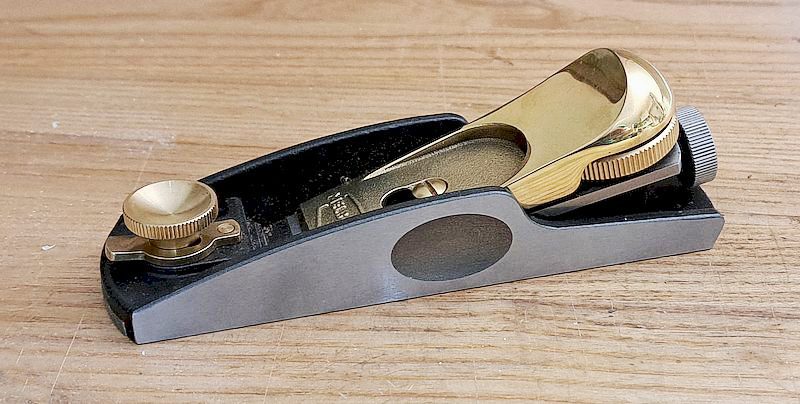
A well-crafted, versatile tool suitable for both novice and experienced woodworkers.
Block planes come in two versions – standard planes typically have a bed angle of 20°, while low angle planes have a bed angle of 12°. The low angle version excels for trim work and when working end grain or gnarly grain in figured wood. It’s a great choice for chamfering edges and for use with shooting boards. Its low cutting angle reduces tear-out and allows for more precise control. If you’re starting out and have to pick one, the low angle block plane is usually the most versatile of the two.
Manufacturer: Melbourne Tool Company
Item: MTC-49407
Price: $129.00
Bed angle: 12°
Blade bevel angel: 25°
Blade width: 35mm | 1-3/8″
Blade thickness: 3.4mm | just over 1/8″
Body material: Ductile cast iron
Blade material: M2 high speed steel
Sole length: 6-3/8″
Weight: 750 g | 1.75 lbs.
Made in: Overseas
Warranty: Limited lifetime
Source: Tegs Tools
At just 1-3/4″ wide, 6-3/8″ long, and weighing 1-3/4 pounds, this lovely little plane is smaller in size and weight than other low-angle planes on the market but includes all the features you’d want. The body casting appears excellent: it’s very clean, with a finely ground sole and sides. It fits the hand wonderfully, and the slightly eased edges increase comfort. The sole was nice and flat (no need for any work).
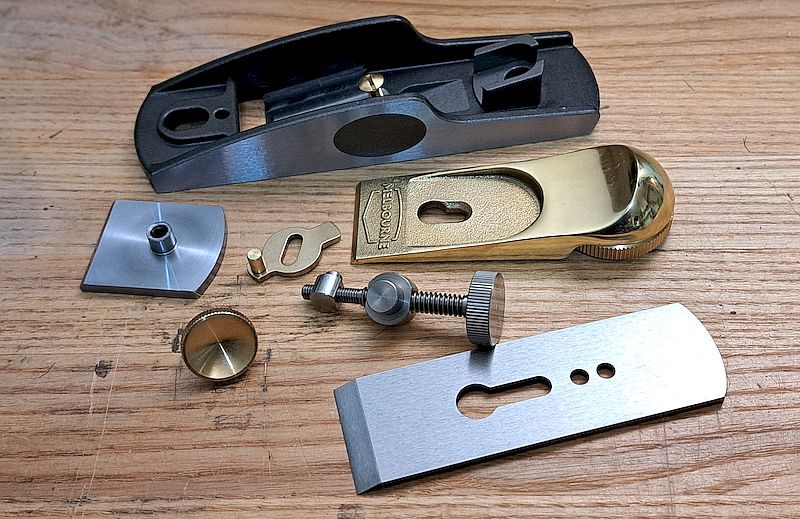
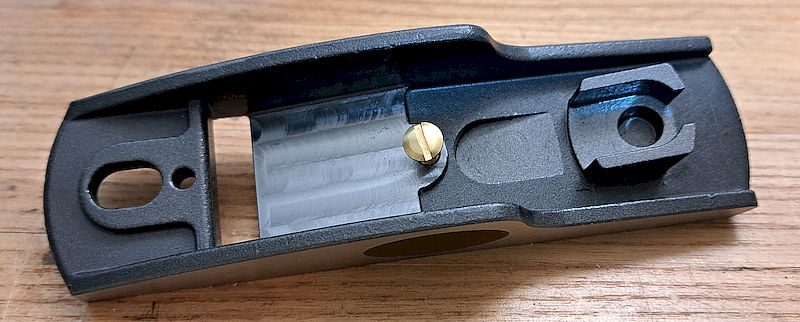
It has a standard 12° bed angle, and coupled with a 25° blade bevel, gives a low effective cutting angle of 37°, which makes it ideal for end-grain work.
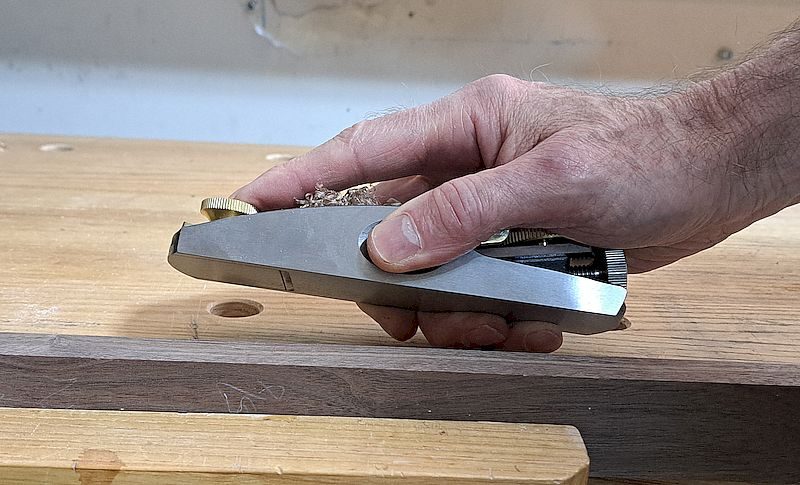
The cutting edge of the blade is square to the sides and required only minimal honing.
The front shoe is perfectly aligned with the sole. It enables you to fine-tune the mouth width to suit different types of wood and cuts, helping to minimize tear-out on difficult grains.
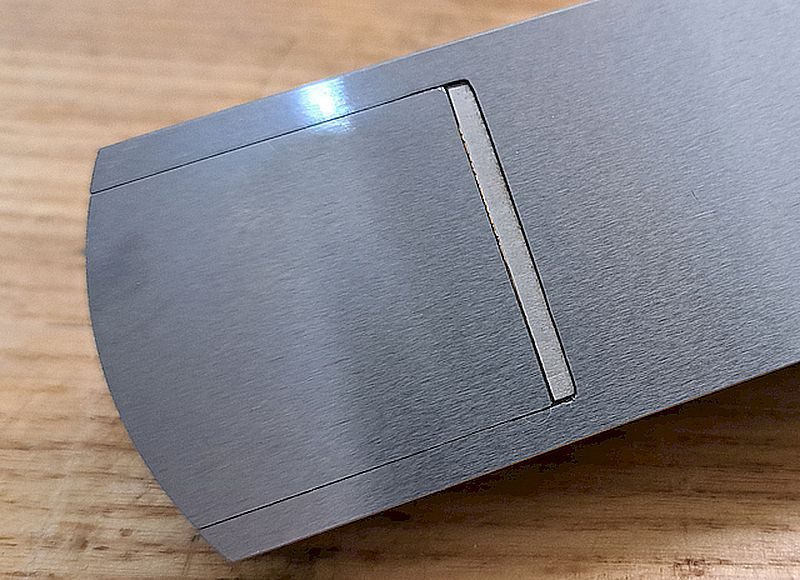
The M2 HSS blade offers excellent edge retention, reducing the frequency of sharpening. I found that it doesn’t take appreciably more time to sharpen than other blade steels.
The blade advances and retracts smoothly thanks to a Norris-style adjuster. This style of thread provides super fine control over the blade setting. However, you may notice a slight amount of lag (backlash) when changing the direction of the adjustment knob. This is likely due to the differential thread on the adjuster. As a result, you have to turn the knob a bit more to make bigger adjustments. Once you’ve used the plane for a while, the issue becomes a non-issue.
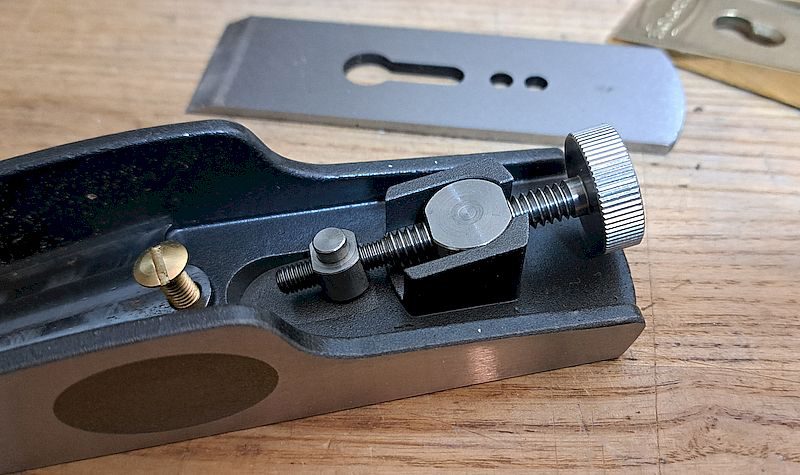
The cap iron is very sleek — a bit like a bobsled. Because it’s thinner than other cap irons, you might think it’s more prone to breakage. When tightening it, avoid using undue force — apply just enough torque so that the cap iron and blade stay in place. Avoid overtightening.
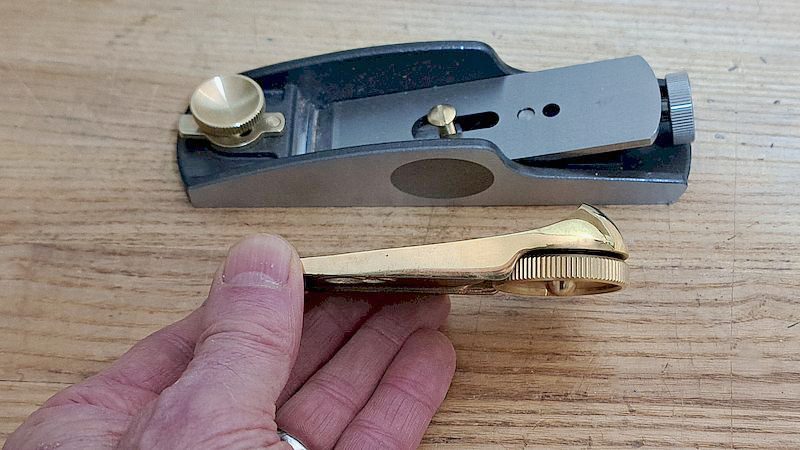
MTC offers additional blades ground to 38° and 50°, allowing for effective cutting angles of 50° and 62°, respectively. This versatility enables the plane to handle a variety of tasks, from general smoothing to working with figured or challenging grain.
The MTC Low Angle Block Plane stands out as a well-crafted, versatile tool suitable for both novice and experienced woodworkers. Its combination of quality materials, thoughtful design, and affordability makes it a worthy consideration, especially for those looking to expand their hand tool collection without breaking the bank.
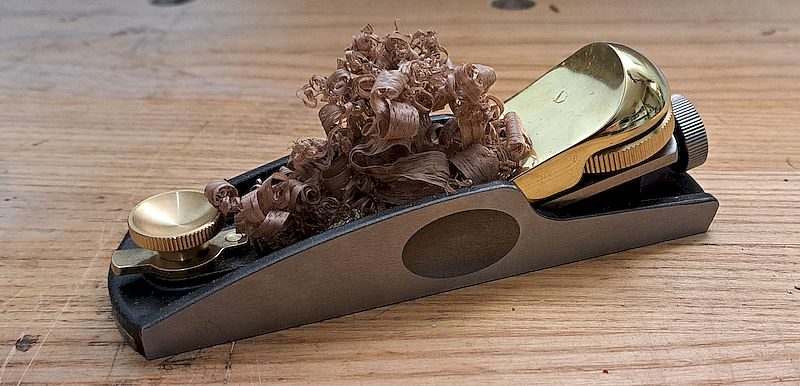
Carl Duguay - carlduguay@gmail.com
Carl is a Victoria-based furniture maker and the senior editor at Canadian Woodworking & Home Improvement.
More articles in Product Reviews


